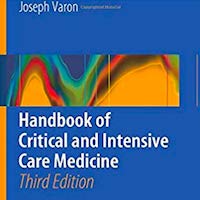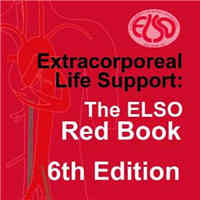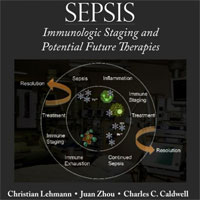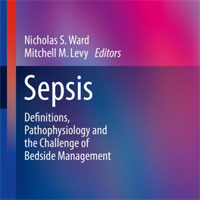Tag: infection
Standard vs. Double Dosing of Beta-lactam Antibiotics in Critically Ill Sepsis Patients
The BULLSEYE trial is a randomized controlled study designed to enhance the treatment of critically ill patients with septic shock. The concept of administering higher and double doses of beta-lactams in such patients... read more
PCR and Biomarker Algorithms to Guide Antibiotics in Lower Respiratory Tract Infections
Acute chest syndrome (ACS) in sickle cell disease (SCD) is life-threatening and characterised by a new infiltrate on imaging plus fever or respiratory symptoms.1 Causes of ACS include infections, venous or fat embolisms or... read more
Eosinopenia as a Predictor of Clinical Outcomes in CAP Patients
Contrary to previously published data, our analysis did not demonstrate an association between eosinopenia and increased mortality risk in hospitalized patients with community-acquired pneumonia (CAP), highlighting the complexity... read more
Recent Advances in Severe Sepsis and Septic Shock Management
This review highlights recent advances in the treatment of severe sepsis and septic shock, emphasizing new strategies aimed at improving overall survival and reducing mortality in this patient population. Despite years... read more
Oral Health Care and VAP in ICU Patients
Both Zataria Multiflora (ZM) and Chlorhexidine (CHG) and CHG alone reduce ventilator-associated pneumonia (VAP) incidence and improve the oral health status of mechanically ventilated patients. However, the combination of... read more
Prone Position: Achieving Nutritional Goals
Critically ill patients in the prone position had longer hospital stays and higher mortality rates, while being more likely to initiate and remain on enteral nutrition for a longer period. However, no significant differences... read more
Cytokine Storm Syndrome
Cytokine Storm Syndromes, including HLH and MAS, are frequently fatal disorders, particularly if not recognized early and treated during presentation. The genetics of Cytokine Storm Syndromes are being defined with many of... read more

Sepsis Management in Resource-limited Settings
This book is open access under a CC BY 4.0 license. It constitutes a unique source of knowledge and guidance for all healthcare workers who care for patients with sepsis and septic shock in resource-limited settings. More... read more
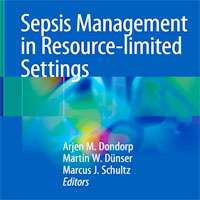
Thiamine and Ascorbic Acid in Sepsis and Septic Shock
Exploring the individual and synergistic effects of ascorbic acid and thiamine on key pathways implicated in sepsis pathophysiology has not yielded unequivocal evidence supporting their use without concomitant corticosteroids. Heterogeneity... read more
Severe Trauma and Sepsis: Organ Damage and Tissue Repair
This book discusses recent progress in organ damage and tissue repair following severe trauma and sepsis. In part 1, it introduces the theory and clinical practice in organ damage. In part 2, it covers all the subjects... read more
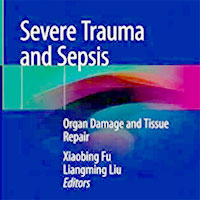
ARDS Predictors in ICU Patients with Sepsis Using Dynamic Immune Indicator Changes
This study underscores the pivotal role of dynamic immune indicator changes in predicting acute respiratory distress syndrome (ARDS) development among ICU sepsis patients. By incorporating immune cell and immunoglobulin dynamics... read more
Alcohol Consumption Association with the Risk of Bacterial Infection and Pneumonia
Alcohol consumption has a nonlinear J-shaped dose–response association with the risk of acquiring and dying due to bacterial infection and pneumonia, where moderate consumption between one-half and four UK units per day... read more
Factors Influencing the Mortality of Patients with Subarachnoid Hemorrhage in the ICU
Spontaneous subarachnoid hemorrhage (SAH) is a prevalent condition for those between the ages of 50 and 60 years, with a high mortality rate in severe cases. The findings of this study indicate that a history of loss... read more
Epidemiology of Myocardial Injury in Trauma Patients
Pathological Troponin concentration elevation occurs in 7% of all trauma patients and it identifies the seriously injured high-risk cohort with worse outcomes than expected based on injury severity. The timing of the... read more
Fungal Infections Surveillance and Prevention in the NICU
It was determined that colonization and development of invasive mycoses among newborns are most often caused by Candida sp., while the detection of filamentous fungi remains sporadic. The etiological role of Malassezia... read more
Prognostic Predictor Using Lactate-to-Albumin Ratio in Patients with Cirrhosis and Sepsis
Lactate-to-albumin ratio (LAR) is strongly associated with poor prognosis in patients with cirrhosis and sepsis. LAR is a promising prognostic marker that provides clinicians with a simple and effective tool for risk... read more
ICU Protocols: A Step-wise Approach, Vol I
The second edition of this highly successful book includes up-to-date notes on the step-wise management of clinical emergencies encountered in everyday intensive care units (ICU). Each thoroughly revised chapter provides... read more

Antibiotic Prophylaxis Effectiveness in Polytrauma Patients
The results indicate that antibiotic prophylaxis has no significant effect on mortality and clinical status compared with placebo or standard care in adult polytrauma patients but may reduce the risk of VAP. However,... read more
Early Experience on Universal Prophylaxis in Infants Against RSV
During the 2023-2024 season, nirsevimab significantly reduced the risk of bronchiolitis and confirmed RSV infections in primary care, hospital, and pediatric ICU admissions among infants aged 0 to 11 months, even in a season... read more
Cytomegalovirus Infection in Immunocompromised ICU Patients: What Intensivists Need To Know
Cytomegalovirus (CMV) infection and disease in critically ill immunocompromised patients pose a unique challenge for intensivists. The broad spectrum of clinical presentations and the difficulty in distinguishing CMV-related... read more
Unlocking the Predictive Power of Nutritional Scores in Septic Patients
This study highlights the significant prognostic utility of nutritional status evaluation in septic patients admitted to internal medicine wards. Among the tools evaluated, the mNUTRIC score—likely because of its dual... read more
Dynamic Nomogram for AKI Prediction in ICU Patients with AHF
After strict screening, 1338 patients with acute heart failure (AHF) were included in the derivation set, and 3,129 in the validation set. Sepsis, use of human albumin, age, mechanical ventilation, aminoglycoside administration,... read more




